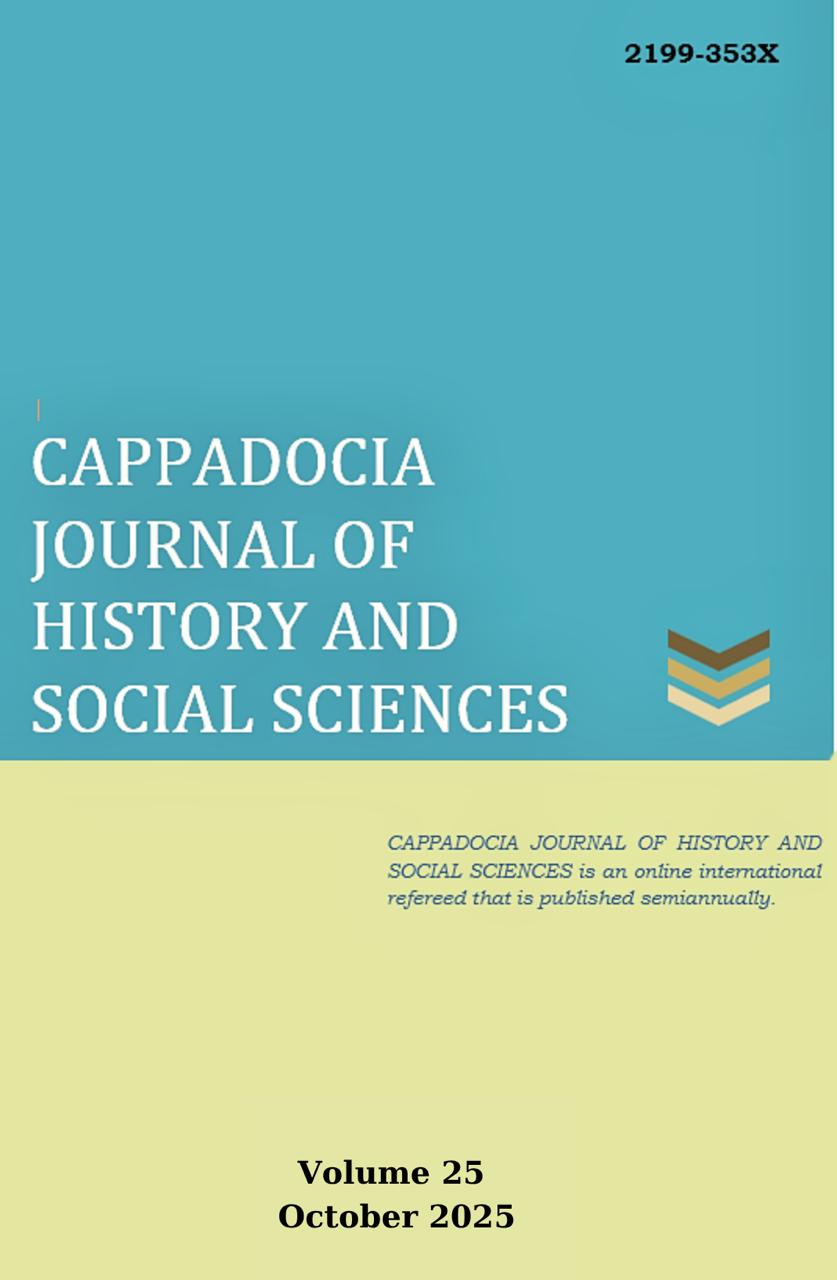EVLİYA ÇELEBİ’NİN SEYAHATNAMESİ’NDE KAFDAĞI TASAVVURU: İSLAM COĞRAFYA GELENEĞİ VE BİLİM TARİHİ BAĞLAMINDA BİR İNCELEME
Author :
Abstract
Bu makale; Evliya Çelebi’nin Târîh-i Seyyâh Evliyâ Efendi olarak isimlendirdiği eserinin yedinci cildinde ayrıntılı bir şekilde okuyucuya sunulan Kalmık kavminin Kaf Dağı’na seyahatlerinin hikayesini İslam medeniyeti coğrafya ve haritacılık tarihi ve Acâibu’l-Mahlûkât geleneği bağlamında incelemektedir. Evliya’nın dünya tasavvurundaki Kaf Dağı motifi ile Kalmık kavminin uzun uğraşlar sonucu ulaştığı ve “kâbe” olarak tanımladıkları bölge, gelenek çizgisinde İskender Seddi ve Yecûc kavmi hakkındaki anlatılarla bütünleşmektedir. Araştırmada söz konusu anlatının Seyahatname’nin diğer ciltlerindeki tekrarları da karşılaştırmalı olarak ele alınacaktır. Öyle ki eser içerisinde tekrarı yapılan kavram veya hikayelerin ayrıntıları Evliya Çelebi’nin üslubunu tanımak açısından yardımcı bir rol oynamaktadır. Öte yandan el-Me’mûn haritası (9. yüzyıl) başta olmak üzere İbn Hurdazbih (10. yüzyıl), Ebû Hâmid el-Gırnâtî (12. yüzyıl), Zekeriya el-Kazvînî (13. yüzyıl) ve İbnu’l-Verdî (15. yüzyıl) gibi coğrafyacıların dünya tasavvurlarındaki el-Bahru’l-Muhît, Bahru’z-Zulumât, Kaf Dağı ve Ab-ı Hayat gibi unsurlar haritalardaki örnekleriyle değerlendirilerek metinler arası bir akış takip edilmektedir. Bir yanda Evliya’nın kabul ettiği otoritelerin gücü ve onun geleneğe sadık olan yönü kendini gösterirken diğer yanda Yeni Dünyanın varlığından ve şeklinden haberdar olan bir alimin bu bilgileri nasıl sentezlediği görülmektedir. Sonuç olarak Eski Dünya ve Yeni Dünya arasında bir hikâye ile köprü oluşturan Evliya Çelebi yazılı kültür ile sözlü kültür arasında kendisinin dahi peşinden gitmek isteyeceği bir hikâye anlatmaktadır. Bu anlatı; bilginin zaman, mekân ve kültürler arası dolaşımını yansıtan güçlü bir örnek olarak değerlendirilmektedir.
Keywords
Abstract
This article analyses the story of the Kalmyk tribe's journey to Mount Kaf, which is presented to the reader in detail in the seventh volume of Evliya Çelebi's Târîh-i Seyyâh Evliyâ Efendi, in the context of the history of geography and cartography of Islamic civilisation and the tradition of Ajâibu al-Makhlûkât. The motif of Mount Kaf in Evliya's conception of the world and the region that the Kalmyk tribe reaches after long labours and which they define as ‘Kaaba’ are integrated with the narratives about the Great Wall of Alexander and the Yajûj tribe in the line of tradition. In this study, the repetitions of this narrative in other volumes of the Seyahatname will also be discussed comparatively. In fact, the details of the concepts or stories repeated in the work play a helpful role in terms of recognising the style of Evliya Çelebi. On the other hand, the map of al-Ma'mūn (9th century), Ibn Hurdazbih (10th century), Abū Hāmid al-Ghyrnātī (12th century), Zakariya al-Qazwīnī (13th century) and Ibn al-Wardī (15th century), as well as the elements such as al-Bahru'l-Muhīt, Bahru'z-Zulumāt, Mount Kaf and Ab-ı Hayat in the world imagination of geographers are evaluated with their examples in maps and an intertextual flow is followed. On the one hand, the power of the authorities accepted by Evliya Çelebi and his loyalty to tradition are evident; on the other hand, it is seen how a scholar who is aware of the existence and shape of the New World synthesises this information. In conclusion, Evliya Çelebi, who creates a bridge between the Old World and the New World, tells a story that even he himself would like to follow between written culture and oral culture. This narrative is considered as a powerful example reflecting the circulation of knowledge across time, space and culture.





